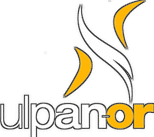Hebrew Rapid-Language Acquisition (RLA)
Ulpan-Or’s Rapid Language Acquisition (RLA) method has been developed by Orly and Yoel Ganor after years of conducting extensive research and gaining field experience with vast audiences of students from many different countries around the world, at all ages and levels.
The RLA concept goes hand in hand with Dr. Stephen Krahsen’s theory of Second Language Acquisition (SLA) theory, which strongly advocates an acquisition process as opposed to a learning process for Hebrew writing, Hebrew text, and Hebrew speech.
There is a clear Acquisition-Learning distinction. According to Dr. Krashen there are two independent systems of second language performance: ‘the acquired system’ and ‘the learned system’.
Ulpan-Or’s RLA method is based on ‘acquisition’, which is the product of a subconscious process very similar to the process children undergo when they acquire their first language.
It requires meaningful interaction in the target language, Hebrew, using natural communication in which speakers are concentrated not on the form of their utterances, but mainly in the communicative act. The form is achieved naturally; similarly to the process native speakers acquire Hebrew writing, Hebrew text, and Hebrew speech.
On the other hand, the more conventional ‘learning’ process is the product of formal instruction and it comprises a conscious process which results in conscious knowledge ‘about’ the language, for example knowledge of grammar rules.
According to Dr. Krashen, ‘learning’ process is much less effective than ‘acquisition’ process:
“Language acquisition does not require extensive use of conscious grammatical rules, and does not require tedious drill.” Dr. Stephen Krashen
Ulpan-Or’s RLA concept views that a number of variables play a facilitative role in second language acquisition. These variables include: motivation, self-confidence and anxiety.
RLA approach asserts that if an informal setup is provided, it helps learners to gain high motivation, self-confidence, good self-image, and a low level of anxiety. These are better equipped for success in second-language acquisition for Hebrew writing, Hebrew text, and Hebrew speech.
Low motivation, low self-esteem and debilitating anxiety which is mostly found in standard classroom setups, can form a ‘mental block’ that prevents comprehensible input from being used for language acquisition.
Ulpan-Or study materials
Guided by the RLA concept, Orly and Yoel designed Hebrew study kits and put together programs based on those kits for all levels. Ulpan-Or materials are based on lively up-to-date dialogues and day-to-day life situations, which introduce elements of relevance and stimulate assimilation process.
Ulpan-Or materials are designed for English-speaking audiences who are learning Hebrew writing, Hebrew text, and Hebrew speech and incorporated with a unique methodology of reverse translation, which is a part of the RLA concept.
English component
The English component has two main functions:
1. Serves as an effective and fast medium for the target language acquisition, as opposed to teaching Ivrit Be’Ivrit (Hebrew in Hebrew).
2. Serves as a reverse basis to stimulate assimilation of correct target language structure when translating from native language to target language and frees the person from negative anxiety.
Audio component
The audio component plays a major part in the acquisition process and all Ulpan-Or study kits comprise text closely followed by audio content. This assists students to tune into the Modern Hebrew sound, grasp the proper pronunciation, assimilate new vocabulary the natural way, and become communicational in a very short time in Hebrew writing, Hebrew text, and Hebrew speech.
The audio part is easily presented to the student in a digital form, downloadable to iPod, MP3 / MP4 players or via a podcast.
Listening to the audio part is done by students as a “transparent” activity, which does not require any special effort. It can be done while driving a car, riding a bus, jogging, etc. Yet, it is very effective and facilitates the target language assimilation in the active speech layer.
Structural / Grammar component
Hebrew structural component and grammar are presented to the student in a totally new way, based on sound patterns, which are a lot easier to comprehend and remember in comparison with the standard root-based approach for Hebrew writing, Hebrew text, and Hebrew speech.
Environment / Setup at Ulpan-Or Jerusalem and Tel Aviv Offices
In its facilities Ulpan-Or has created a warm, home-like pampering environment, which reinforces students’ self confidence, motivation and diminishes the level of negative anxiety.
Throughout all Ulpan-Or programs, whether designed for singles or groups, each participant is assessed for his or her starting level and then receives individual care in one-on one sessions with a personal coach. These individual sessions are interleaved with uniquely designed group interaction and self study sessions.
Outdoor / Real life activities
To further facilitate and enhance the acquisition process Ulpan-Or programs combine indoor and outdoor activities, exposing students to real-life situations, in which they interact with Israelis. In a way, the outdoor activities serve also as a natural test setup for the students to examine their progress in Hebrew writing, Hebrew text, and Hebrew speech.
“In the real world, conversations with sympathetic native speakers who are willing to help the acquirer understand are very helpful.” Stephen Krashen
